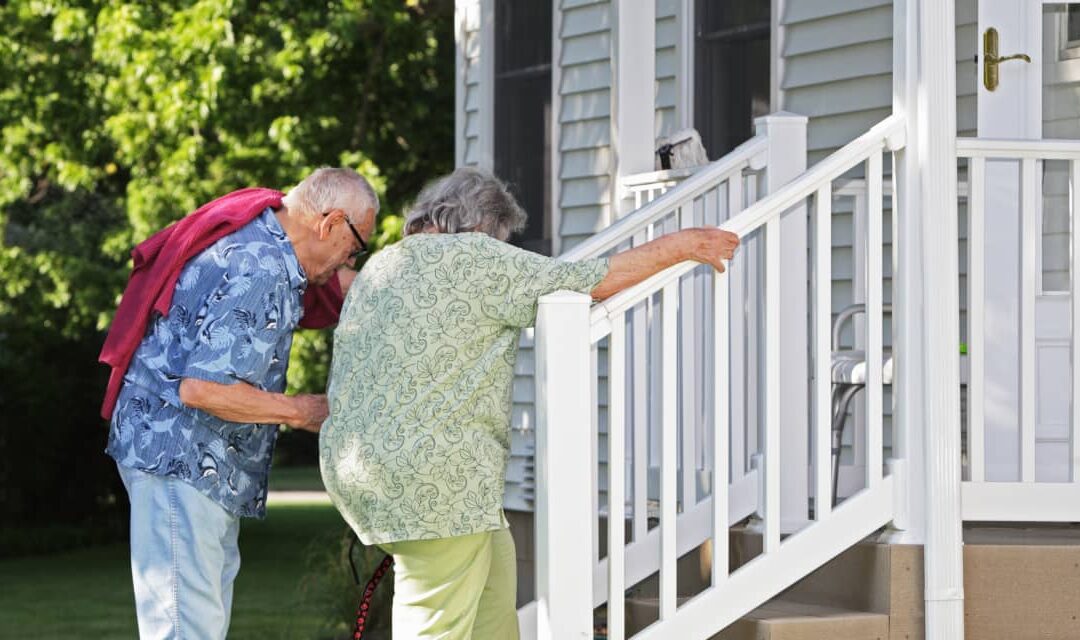The vast majority of adults want to live out their lives at home, but aging-in-place goals take planning, help and money to balance the burdensome costs of both housing and long-term care.
As many as 77% of adults 50 and older want to age in place in their homes, according to AARP, yet 70% of older adults will need some support to age in the home of their choice, said Samara Scheckler, a research associate at Harvard University’s Joint Center for Housing Studies.
Support could range from assistance with activities of daily living, like dressing and bathing, to more advanced care for someone with dementia or Alzheimer’s disease. The median cost of a home-care aide is $27 an hour, according to Genworth’s Cost of Care report, putting those services out of reach for many older adults.
From the archives (September 2021): ‘I’m taking care of everybody, and now I want somebody to take care of me’: The high price of America’s care-worker crisis
In addition to long-term-care costs, housing costs also often place a burden on older adults. In 2021, an all-time high of nearly 11.2 million older adults were “cost burdened,” meaning they spent more than 30% of their income on housing, according to the Joint Center for Housing Studies.
Those who were cost burdened included a wide range of older adults, including renters, homeowners with mortgages, and households age 80 and over, the Harvard research center found.
When the cost of care is added to housing costs, only 14% of single people 75 and older can afford a daily visit from a paid caregiver, and just 13% can afford to move to assisted living, Scheckler said. The median cost of assisted living is $4,500 a month, according to Genworth.
“People want to live in their home for independence, but they still need resources, assistance and support to stay within those four walls,” Scheckler said. “Even the fit of the home is important: Does it have laundry on the main floor? A bathroom? Both parts — care and housing suitability — need to be in place. But it’s often out of economic reach for many.”
From the archives (August 2022): Dream of aging in place? This government program could be a game changer for seniors.
The dual financial stress of care and housing comes as the population of older adults is growing. The U.S. population age 65 and older increased by 34% in the last decade, reaching 58 million in 2022. In the coming decade, the fastest growth will occur among people over 80, according to the Harvard center.
As the population ages, more older adults will struggle to afford either the home of their choice or the care they need. “With subsidies for housing and [long-term-care] services scarce, many older adults will have to forgo needed care or rely on family and friends for assistance,” said Jennifer Molinsky, project director of the Housing an Aging Society Program at the Joint Center for Housing Studies.
Accessible housing for older residents and people with disabilities is also in short supply, making it more difficult to age in place. Less than 4% of U.S. homes offered single-floor living, no-step entries, and wide hallways and doorways, the three key features of accessible housing, according to the Harvard research center’s analysis of 2011 survey data.
Read: 6 ways affordable or accessible housing for older adults is being created in the U.S.
While some older adults have home equity they can tap to pay for care or services, many do not. “This is not only because of the increasing number of older adults, but because of widening wealth and income inequality,” Molinsky said.
Older renters have only 2% of the net wealth of older homeowners. There are inequalities even among homeowners, with Black and Hispanic homeowners having lower housing equity than white homeowners, according to the Harvard center.
“The folks most at risk are socially vulnerable in other ways,” Scheckler said.
Meanwhile, more older adults have mortgages now. Some 41% of homeowners age 65 to 79 had a mortgage in 2022, compared with 24% in 1989. More than 30% of homeowners age 80 and over are also carrying mortgages, up from just 3% three decades ago, according to the Harvard center.
“Borrowing is often a way for older homeowners to access cash for basic needs or care,” said Chris Herbert, managing director of the Harvard center.
However, with a mortgage, the older adult is burdened with debt in later life at a time when their income may be constrained, Scheckler said.
From the archives (June 2023): More baby boomers are becoming homeless: ‘It takes just one crisis’ to push someone onto the streets
The people who suffer the most from the burden of housing and care costs are those who need support and can’t afford it, yet have too much income to qualify for government subsidies, Scheckler said. This demographic tends to fall between the median and low end of the middle range of income, making it the “gaps group” that fails to qualify for help but remains too financially strapped to pay out of pocket, she added.
“The gaps group is often overlooked but struggling,” Scheckler said. “A lot of vulnerable groups are struggling.”
More from the archives (February 2023): Where can I afford to live in retirement? Senior housing and the ‘forgotten middle.’








